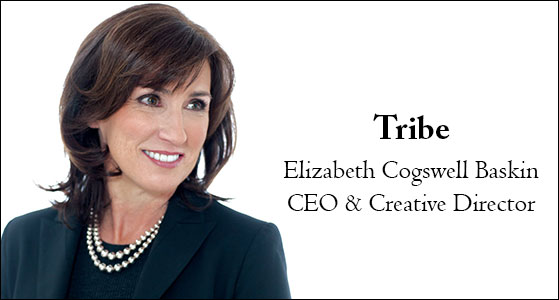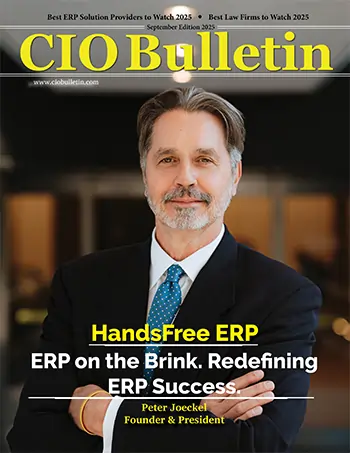CIO Bulletin

Tribe was founded in 2002 as a creative branding boutique for consumer advertising – although some of its very first clients, like UPS, Porsche and The Home Depot, hired it for employee-facing communications. In 2009, Tribe made the commitment to devote its practice exclusively to internal communications, which enabled Tribe to gain deep experience in the employee audience across many industries. Words matter and the words you use for your employer brand matter a lot. The language of your employer brand conveys tone of voice, communicates cultural attitudes, and suggests the aspirations of employees who choose to work at your company instead of anywhere else.
Because the language of an employer brand is an important business decision, it often involves multiple decision makers. That’s as it should be — but having various stakeholders help write the language, usually by adding in more words here and there, generally does not improve the effectiveness of the communication. Leave the laundry list of rational reasons for working at your company — from compensation and benefits to recognition, development and all the rest — to your employee value proposition. The employer brand promise reflects the emotional experience of employees at your company. If remote work is the norm at your workplace, managers may need to work harder to build the sort of human connections that help remote teams feel like they have personal relationships as well as professional ones. When everyone is in the office, the day-to-day interaction usually includes plenty of small talk as well as visual cues that help employees feel they know their colleagues as people as well as co-workers. For instance, you might walk into the break room and feel compelled to join a conversation about the big game last night. Or stop by someone’s office to ask a question and notice photos of their kids or their dog. These random moments help you get a glimpse into people’s lives outside work.
WELCOME UNEXPECTED ATTENDEES IN VIDEO MEETINGS
In remote teams, Zoom or Teams meetings often include a dog napping in the background, a spouse wandering through the frame or occasionally even a kid who needs something from their parent. Managers can signal the importance of the human side of remote work by welcoming these cameo appearances. It’s a good opportunity to stop the business discussion for a moment and promote curiosity about each other’s lives instead.
Managers might also make a point of being a little early to video meetings and engaging other team members in small talk as they enter. It’s a good way to add some personal interaction to a meeting without stretching the meeting beyond its planned stop time. When the business of the meeting wraps up a few minutes early, hang there for a minute and move the conversation to something unrelated to work. Hopefully managers know enough about their individual team members to inquire about how a new baby is sleeping or what the snow conditions were like on a recent ski trip.
SHOW YOUR OWN HUMANITY
Managers can be role models by sharing a few details about their own lives. Help your team members feel they know you as a person by talking about your family, your exercise routine, your weekend plans and your interests outside work. You also can demonstrate that wellness is a priority by mentioning that you’re stopping work at a certain time to make a Pilates class or that you’ll be out for a few hours midday to attend your kid’s performance at school. If you were in an office, taking this time for personal priorities would be more visible, so work to share this sort of thing with your remote team. It will help them feel its okay to do the things they need to do in their own personal lives.
There’s also an opportunity for managers to set the example of showing their human side in collaboration platforms like Slack or Teams, or in professional social media like LinkedIn. In addition to communications about work progress, comments on team members work and updates on deadlines, you might post the occasional stupid video of your cat, photo from a volunteer activity or a comment about a concert you went to this weekend.
COLLABORATION BENEFITS FROM HUMAN CONNECTIONS
People feel more comfortable collaborating with people they know. In one Tribe study, respondents said they felt significantly less vulnerable contributing ideas to a group when they had pre-existing relationships with those people — especially if they’d spent time with them in person beforehand. If your team depends on collaboration and innovation, you might want to create opportunities to meet face to face on some sort of regular basis. Just being in the same room together for a few hours occasionally can give building those work friendships a good head start.
NEW HIRES NEED THESE HUMAN CONNECTIONS THE MOST
Joining a remote team means it sometimes takes a little longer to build connections with colleagues. When your only contact, or the majority of contact with your co-workers, is through technology, it’s just more difficult to make new work friends. When onboarding new people, build in plenty of one-on-one time for them to get to know not just their manager, but their team mates as well. It’s also helpful to create some opportunities for them to connect across functions. One Tribe client uses a platform to pair people in the organization randomly for a 20-minute Teams chat. The executive leadership team participates on a regular basis, so new employees might find themselves talking to someone in a different department or country — or the CEO. (For more on humanizing the CEO, you might like this Best Practices one-pager.)
THE BUSINESS ADVANTAGE OF BEST FRIENDS AT WORK
Gallup has raised awareness of the importance of work friendships with its survey question asking employees if they have a best friend at work. And numerous studies have shown us that people are less likely to switch jobs if they feel especially close to their team members. There are solid businesses reasons for helping employees build strong connections and personal relationships with the people on their team, and beyond. Interested in ways to promote human connections with your employees? Tribe can help.
Meet the leader behind the success of Tribe
Elizabeth Cogswell Baskin, CEO and Creative Director

Insurance and capital markets







